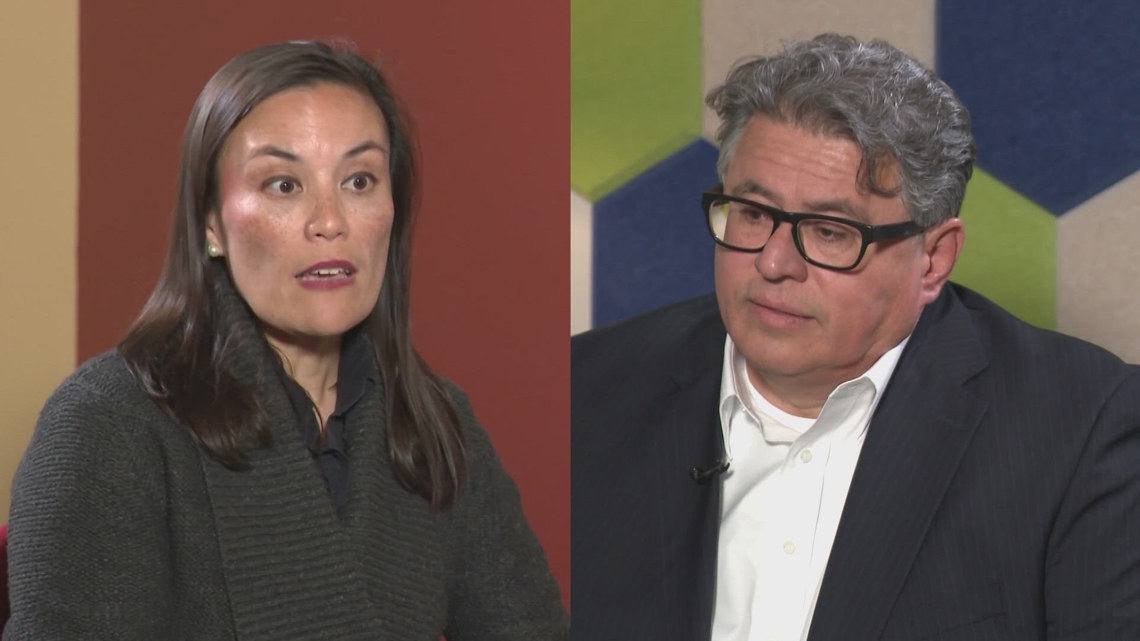Early voter turnout was up 33% over the May election, paving the way for what experts say will be a close race to the finish line Saturday.
SAN ANTONIO — When voter turnout for one of the San Antonio’s most consequential mayoral elections in some years failed to reach 10% last month, it was mostly chalked up to an overwhelmingly long list of contenders.
If the theory for June’s runoff between Gina Ortiz Jones and Rolando Pablos is that more people will get to the polls now that they have a clearer choice and don’t have Fiesta to distract them, figures from the recently ended early voting period so far make it a reality.
According to the Bexar County Elections Department, a total of 98,412 San Antonio residents got their voting out of the way early ahead of Election Day on June 7. That represents a remarkable 33.2% increase over May, when the early voting window was also eight days long but just 65,786 San Antonio voters cast their ballot early.
If another 3,889 San Antonians voted in the runoff early, the turnout would’ve bested the total number of residents who voted last month.
June’s numbers give Michele Carew, Bexar County’s new elections administrators, reason to be excited leading into Saturday, when the mayoral contest and four City Council races will be decided.
“I know in the May election I was predicting anywhere from 13% to 15%; I was totally off on that,” Carew said. “And then when this (runoff election) started, they asked me the same question. I said, ‘I’m still predicting 13% to 15%.'”


Twenty-seven mayoral candidates were whittled down to two on May 3, when Ortiz Jones and Pablos emerged from the packed field with 27% and 16% shares of the overall vote, respectively. They beat out cybersecurities professional Beto Altamirano and four sitting City Council members who were seeking the promotion to suceed Mayor Ron Nirenberg—paving the way for a historic runoff that will determine not just San Antonio’s first new mayor in eight years, but its first top leader without council experience since Phil Hardberger was elected in 2005.
Given the size of the field, a runoff was all but inevitable after no candidate secured 50% of the vote in May.
Now, with a month of head-to-head debates and endorsement-hunting under their belts, Ortiz Jones and Pablos await voters’ decision Saturday night.
Jon Taylor, chair of UTSA’s Political Science Department, says that if the neighborhoods where early voters mostly turned out is any indication, the result could favor Pablos.
“It’s in areas that normally have a little bit of a higher turnout in San Antonio, especially the conservative areas,” he said. “But it might also speak to Pablos’ campaign, especially, trying to target voters for early voting, and particularly voters in those areas (where) they tend to be more affluent; they tend to be older; they’re more likely to vote compared to younger voters.”
“It’s not necessarily a huge surprise… to see a 30% increase in turnout for early voting,” he added. “We’ll see what that actually translates to in the runoff election itself.”
Though neither candidates’ party affiliations will be listed alongside their names on the ballot – all Bexar County races are non-partisan – the race has nonetheless come to be defined along ideological lines.
Ortiz Jones, a former U.S. Air Force under secretary who served under then-President Joe Biden, has blasted Gov. Greg Abbott’s school voucher initiative and criticized local ICE operations in rounding up undocumented migrants. Pablos served as Texas secretary of state for two years under Abbott and has been staunch in his support for law enforcement and smart budgeting.
Taylor says both campaigns have tried to “federalize” the election around national talking points. The question: How much does that appeal to voters focused on local issues?
“(It’s) kind of amusing to watch, because normally mayoral elections focus on potholes and on busting criminals, not on base closures or basically culture war issues,” he said. “We’ve seen that, though, in this race… they haven’t talked that much about transportation and mobility, which my guess is (that’s) on the minds of a lot of voters.”
In that respect, Taylor said, the race reflects the showdown between Nirenberg and Greg Brockhouse in 2019—a race that also organically turned partisan. Whoever wins between Ortiz Jones and Pablos will reflect the kind of city San Antonio voters want it to be, he adds; one that led by a progressive woman or a blue city with a more conservative mayor.
They’ll also be blessed with a four-year term following voter-approved changes to the City Charter in November. The tradeoff: Without City Council experience, both would have a lot of catching up to do in a short amount of time before budget conversations begin.
“Whoever gets this job is gonna get the thankless task of starting their administration with budget cuts. Either budget cuts or tax increases, neither one of which is very enviable for politicians.”
Much of what happens Saturday will depend on how many residents on the east and west sides make it to the polls, Taylor added, though he says he isn’t confident we’ll get to an overall turnout of 15% or more.
“I think we’re going to see a relatively close race,” he said. “The data seems to suggest that. Either candidate has the ability to win this thing.”
